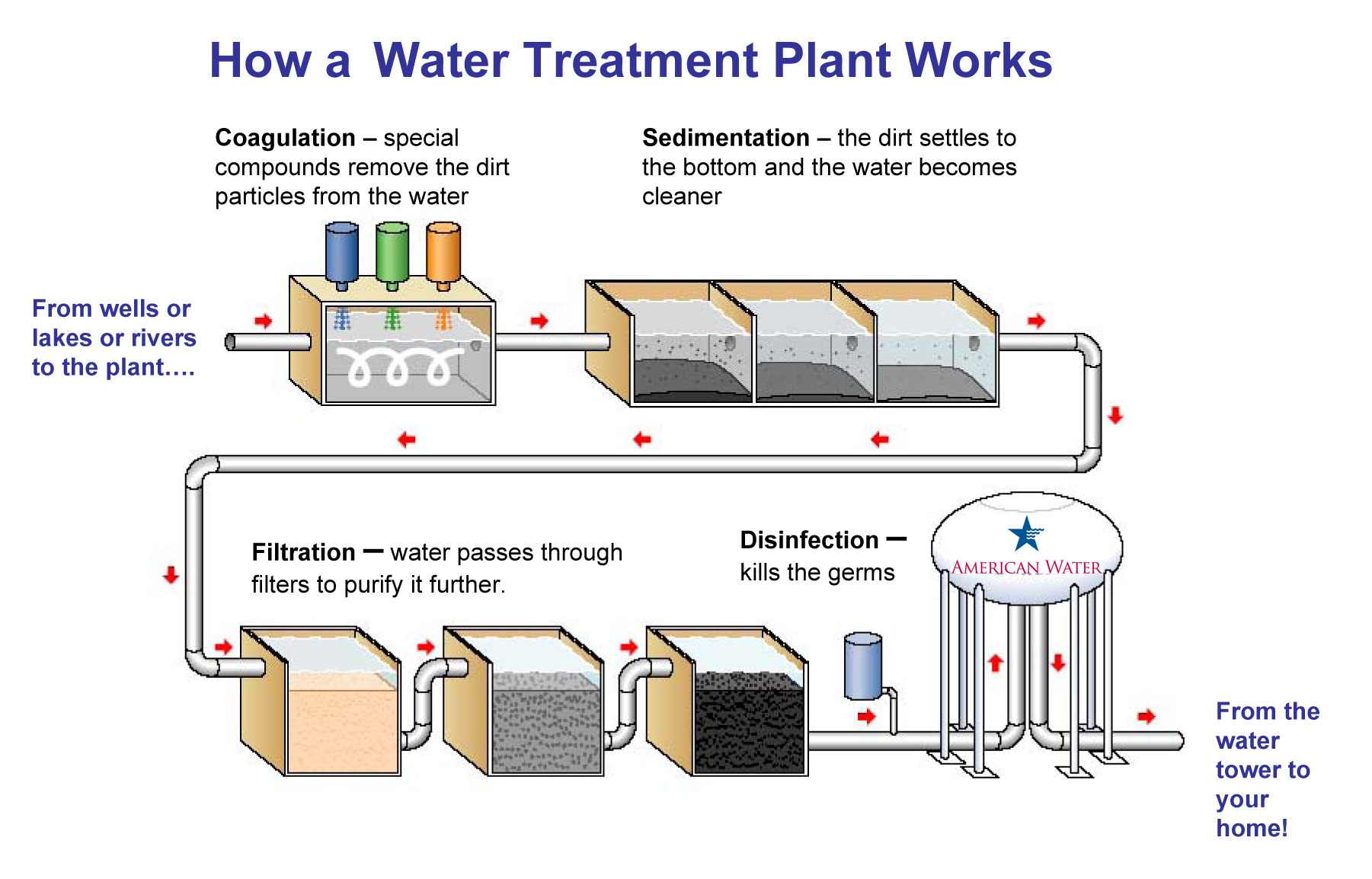WATER TREATMENT
American Water’s treatment and delivery of water is an intricate and involved process. From the moment water begins the journey from its source through our highly sophisticated plants, into underground pipes and to its final destination, our teams of professional scientists and plant operators oversee its passage. We closely monitor its movement and quality and test it frequently.
Each year, we conduct nearly one million tests and measurements using the most advanced technology and equipment available at our state-of-the-art, world-renowned research laboratory in Belleville, Illinois, and at our local utility labs. Our scientists test water samples from across the country to protect against viruses, microbes, hazardous chemicals, algae, metals, minerals and other potential contaminants.
From the time source water from a lake, stream or reservoir enters one of our treatment plants, until it flows through your tap, it goes through five basic treatment steps:
- Coagulation: Alum and other chemicals are added to water to form tiny, sticky particles called “floc,” which attracts dirt and other particles suspended in water.
- Sedimentation: The heavy floc particles settle to the bottom of treatment tanks, allowing for their separation from the water.
- Filtration: The water passes through filters of sand, gravel and charcoal to help remove even smaller particles.
- Disinfection: Chlorine is added or other disinfection methods are used to kill bacteria or other microorganisms in the water.
- Storage: Water is placed in a closed tank or reservoir to allow for disinfection. Water then flows through pipes to homes and businesses in the community.
We understand the value of clean, high-quality water on tap 24 hours a day, and are committed to delivering it reliably.
